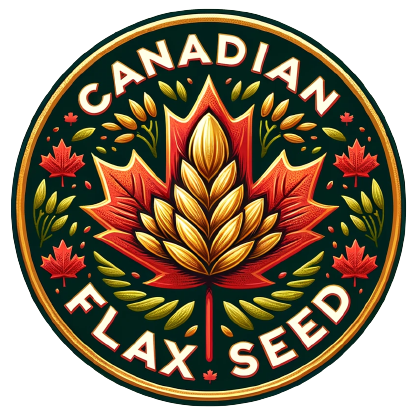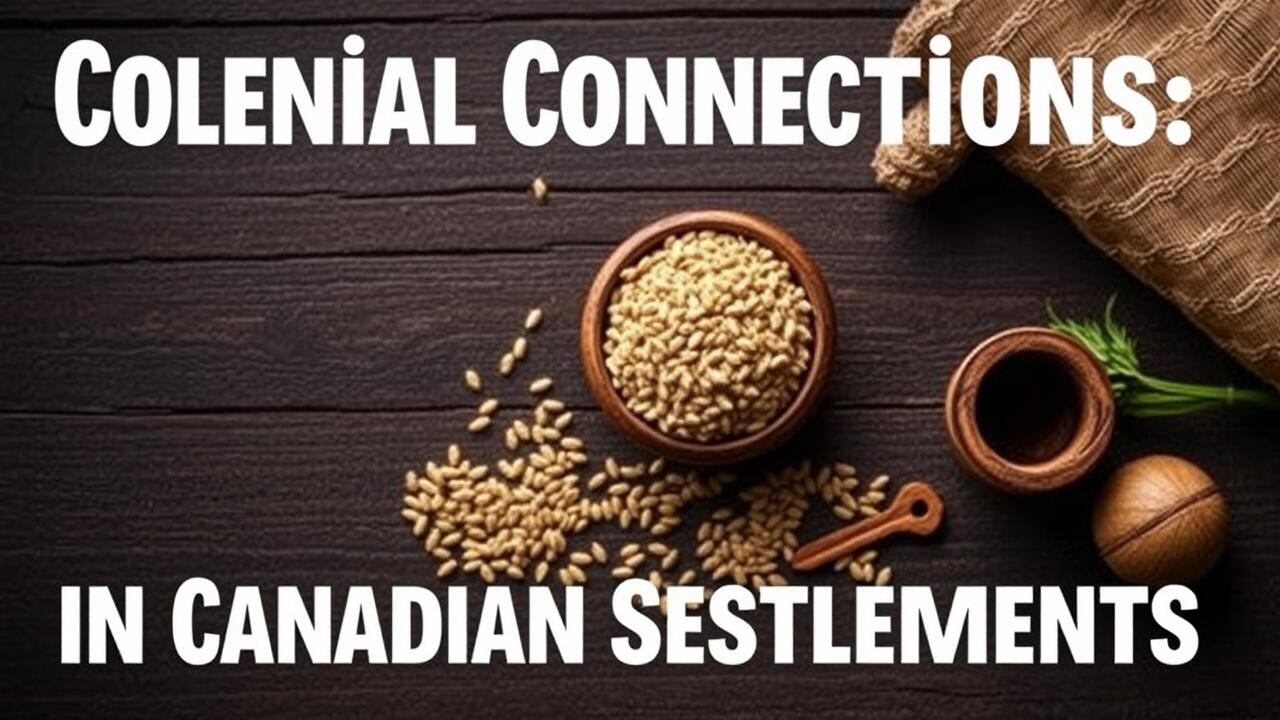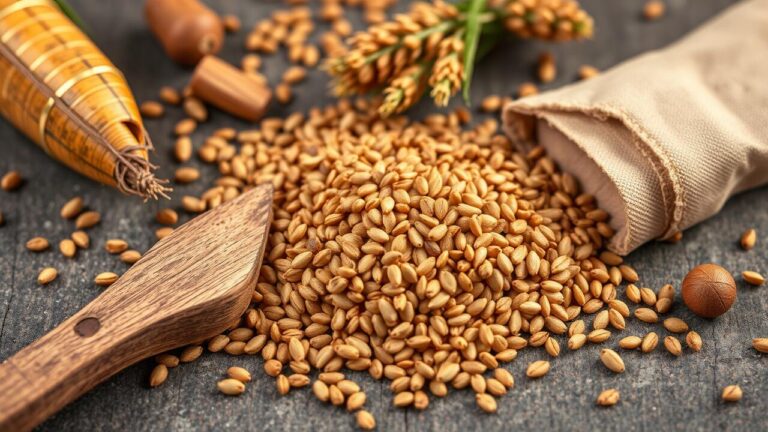Colonial Connections: Flaxseeds in Canadian Settlements
Table Of Contents
Exploring Colonial Connections: Flaxseeds in Canadian Settlements
Key Takeaways
- Historical Importance of Flaxseeds in Canada
- Farming Methods in Early Canada
- Financial Influence of Flaxseeds
- Cultural Ties to Flaxseeds
- Ecological Factors to Consider
Colonial Connections: Flaxseeds In Canadian Settlements | Historical Significance of Flaxseeds in Canada
Flaxseeds played a crucial role in the early agricultural landscape across Colonial Connections: Flaxseeds in Canadian Settlements, reflecting the intertwined histories of various colonial practices. As colonialists settled in regions such as colonial Pennsylvania and colonial Maryland, they brought with them agricultural techniques that included the cultivation of flax, a crop that thrived in both eastern and western Canada. The French colonial empire recognized the value of flax in its colonies, promoting its growth as a staple for textiles and oil. Throughout the colonial era, flax became a significant commodity within the colonial charters, driving trade in the American colonial market and establishing economic ties between French colonies and British settlers. The adoption of flax cultivation not only demonstrated the adaptive strategies of various colonial societies but also underscored the importance of this versatile plant in everyday life and commerce.
Colonial Connections: Flaxseeds in Canadian Settlements | Early Use of Flaxseeds by Indigenous Peoples
Indigenous peoples in Canada employed flaxseeds long before European settlers arrived, recognizing their value for both food and fiber. This early use laid the groundwork for what would become significant Colonial Connections: Flaxseeds in Canadian Settlements. As colonial history unfolded, the knowledge and practices surrounding flax cultivation were essential during the colonial period. Indigenous practices influenced colonial agents in their efforts to adapt these natural resources for their purposes, particularly in the northern colonies and southern colonies of British North America.
As European settlers moved into the region, particularly in areas like the Connecticut colonies and colonial South Carolina, they adopted flax cultivation techniques from Indigenous peoples. This blend of traditional knowledge and European agricultural methods formed a dynamic relationship during the colonial era of the United States. British colonial powers recognized that flax could thrive in the diverse climates of the mainland colonies, making it a staple crop for many settlers. The significance of flaxseeds as both a food source and a fiber product underscored their role in the early economic fabric of Canadian settlements.
Adoption of Flax Cultivation by European Settlers
The introduction of flax cultivation in the British colonies of North America marks a significant chapter in Colonial Connections: Flaxseeds in Canadian Settlements. Early European settlers recognized the utility of flax as both a fiber and a food source. In regions such as colonial New York and colonial New England, flax was cultivated for its linen, which became an essential fabric for clothing. The middle colonies and colonial Virginia also adopted flax farming, benefitting from the favorable climate and soil conditions. As these practices spread, so did the reliance on flax in everyday life across Canada and eastern Canada.
French Canadian settlers also embraced the cultivation of flax, contributing to the diverse agricultural practices within the colonies. The demand for flaxseed grew in colonial North Carolina, where settlers sought to establish a self-sufficient economy. The cultivation of flax became an integral part of the agricultural landscape, intertwining with the cultural and economic development of the North American colonies. Flax played a pivotal role as settlers integrated it into their farming systems, further enhancing their Colonial Connections: Flaxseeds in Canadian Settlements.
Agricultural Practices in Colonial Canada
The introduction of flax cultivation in the colonies marked a significant evolution in agricultural practices during the colonization of North America. As European settlers adjusted to their new environments, they recognized the value of flaxseeds, which provided both a source of fiber and oil. The process of integrating flax farming became a key element in the agricultural fabric of English colonies and crown colonies, reflecting the colonial experience and highlighting the importance of agricultural diversification during this period. Dispersed settlements began to adopt flax cultivation as a colonial tool, establishing a sustainable practice that would support local economies. This cultivation not only played a crucial role in colonial affairs but also created a broader network of trade among colonial provinces and the American colonies, cementing the impact of Colonial Connections: Flaxseeds in Canadian Settlements on both local and transatlantic economies.
Flaxseed Cultivation Techniques
Flax cultivation techniques in Colonial North America were influenced heavily by the knowledge exchanged between Indigenous settlements and European settlers. Colonial merchants recognized the potential of flax as a valuable crop, leading to increased interest among Canadian explorers and farmers. The transition from traditional Indigenous practices to European methods highlighted the blend of agricultural knowledge during colonial times. These techniques laid the foundation for successful provincial colony economies, where flax became a staple in various farming operations across the southern plantation colonies and other regions.
The process of cultivating flax involved meticulous practices that evolved through colonial history. Farmers in the provinces relied on strategies optimized for the soil conditions and climate unique to their colonial holdings. They used simple tools to sow flax seeds, ensuring optimal growth and yield. Over time, colonial views shifted toward a more systematic approach to cultivation, helping to solidify flax’s role within the agricultural landscape of Colonial Connections: Flaxseeds in Canadian Settlements. As the crop gained traction, it became an essential component of the overall economy, connecting the diverse colonies through trade and shared agricultural practices.
- Use well-drained, fertile soil for optimal flax growth.
- Sow seeds in early spring, as flax thrives in cooler temperatures.
- Employ crop rotation techniques to maintain soil health and prevent pests.
- Implement proper irrigation practices, ensuring consistent moisture without waterlogging.
- Monitor for pests and diseases, using organic methods wherever possible.
- Harvest flax when the seed capsules have turned brown and dry for maximum yield.
- Practice post-harvest processing, which includes retting and breaking to extract fibers efficiently.
The Role of Flax in Early Canadian Agriculture
Flax played an integral role in the agricultural landscape of early Canadian settlements, establishing significant Colonial Connections: Flaxseeds in Canadian Settlements. British settlers recognized the plant’s versatility and value, cultivating it not only for textile production but also for its oil and as a rotation crop. Colonial elites often viewed flax cultivation as a means to bolster their economic standing, especially in colonial cities where the demand for diverse colonies’ goods was high. As population growth and settlement expansion occurred, particularly along the western frontier, the crop became essential for sustaining local economies amidst the challenges posed by colonial wars.
In the framework of colonial capitalism, flax emerged as a key agricultural product within both British-American colonies and non-British colonies. Colonial legislatures supported its cultivation, recognizing its potential to generate wealth for the colonial elite and improve trade opportunities. The adaptability of flax made it suitable for various microclimates across Canada, further enhancing its significance in the settlements. As a result, flax farming contributed to the development of a distinctive economic identity while reinforcing the social structures of the time.
Economic Impact of Flaxseeds
The economic impact of flaxseeds in Canada’s early history can be traced through the Colonial Connections: Flaxseeds in Canadian Settlements. New settlers, particularly English colonialists, recognized the value of flax as a cash crop as they established small settlements across several colonies. The cultivation of flax contributed significantly to the agricultural economy, facilitating trade with both Spanish settlements and the American colonies. This crop became essential not only in sustaining the burgeoning communities but also in supporting the settlement project across the southern frontier of English settlement south of French territory. Maroon settlement areas also benefited from flax farming, integrating this valuable resource into their local economies, further emphasizing the multifaceted role of flax in the development of Canada’s agricultural landscape.
Flax Production and Trade in Colonial Settlements
Flax production played a crucial role in the economic framework of many successful colonies in Canada. As European settlers began to establish their presence in the vast territory, they harnessed the crop’s versatility for both food and textiles. The mid-Atlantic colonies became particularly notable for their intensive cultivation practices. These settlers produced flax on traditional territories, integrating it into their daily lives and contributing to the colonial economy. The presence of colonial power facilitated the natural growth of flax farming, aiding colonists in developing their own colonies in a competitive landscape.
Trade networks emerged around flaxseeds, creating vital connections among the colonies. Flax was not only a staple for local use but also a sought-after commodity for barter and export. Charter colonies relied on this agriculture to support their economies and attract further settlement. As American colonial troops required suitable materials for uniforms, flax became an essential resource. The demand for flaxseed products promoted economic interdependence across the French territory east and the established settlements, cementing its significance in Colonial Connections: Flaxseeds in Canadian Settlements.
Flaxseed as a Commodity in the Canadian Economy
The rise of flaxseed as a significant commodity in the Canadian economy can be traced back to the early settlers who recognized its agricultural potential during their colonization efforts. English settlers, particularly in the Puritan colonies, actively cultivated flax as they established agricultural settlements across diverse territories. This crop became integral to their livelihoods, fueling both home consumption and trade as they sought to thrive in the new colony. Its prominence in European-inhabited settlements laid the groundwork for a robust economy, especially in regions like modern Manitoba, where many colonists focused on flax cultivation as a key aspect of their agricultural practices.
Flaxseeds emerged as a vital component of the economy due to their versatile uses, from textiles to food. Major colonization expeditions brought diverse colonists who were eager to adapt traditional practices from their homeland to indigenous lands. The economic importance of flaxseed grew as communities recognized its potential for both domestic use and export. Colonial Connections: Flaxseeds in Canadian Settlements highlights how this crop not only sustained the settlers but also helped to forge connections among different groups within the burgeoning Canadian economy.
| Region | Year Established | Flaxseed Production (tons) | Uses |
|---|---|---|---|
| Manitoba | Early 1700s | 150,000 | Textiles, Oil, Food |
| Saskatchewan | Late 1800s | 120,000 | Textiles, Nutraceuticals |
| Ontario | Early 1900s | 80,000 | Oil, Feed, Human Consumption |
| Alberta | Mid 1900s | 50,000 | Oil, Industrial Applications |
Cultural Connections to Flaxseeds
The cultural role of flaxseeds in Colonial Connections: Flaxseeds in Canadian Settlements highlights the intertwining of indigenous practices and European influences. Early colonists recognized the value of flax, which thrived in the Canadian climate, for both textile and culinary uses. This crop became essential for new colonists, who learned from Indigenous Peoples and adapted cultivation techniques seen in Roman civilizations. Spanish settlers and those at the Pennsylvania frontier also incorporated flaxseed into their agricultural routines. The territorial distribution of flax cultivation reinforced economic ties across the provinces, including loyalist colonies. Exhibits at the Canadian museum emphasize how flaxseed not only served as a commodity alongside Canadian furs but also fostered connections among diverse communities in colonial America, shaping both local culture and trade networks.
Flax in Traditional Canadian Recipes
Traditional Canadian recipes reflect the deep-rooted connections to the land and its history, particularly through the use of flaxseeds. These seeds, with their indigenous origin, were integrated into the diets of early settlers during the colonization process. As communities established themselves in territories like the Canadian Shield region and northern centres, flax became a staple ingredient, often featured in breads and porridge. The arrival of European settlers introduced new culinary practices, blending local ingredients with influences from foreign lands, including recipes from French islands and other provinces.
In the context of the settlement mission of large-scale colonization, flaxseeds served both nutritional and symbolic roles. The first settlement saw the rise of flax cultivation as an essential crop, sustaining early populations and contributing to the emerging Canadian economy. Recipes utilizing flaxseeds not only showcased their versatility but also represented a connection to local heritage and the adaptation of indigenous knowledge into the evolving landscape of modern civilization. Colonial Connections: Flaxseeds in Canadian Settlements provides insight into this unique fusion of culinary tradition and cultural identity.
- Flaxseeds can be used in traditional Canadian bannock, adding a nutty flavor and nutritional value.
- Incorporating ground flax into porridge enhances the dish’s texture and health benefits.
- Flax oil is often used in salad dressings, providing a rich source of Omega-3 fatty acids.
- Traditional Canadian sweets, such as granola bars, can be enriched with flax for added crunch and flavor.
- Flaxseeds are a popular addition to soups and stews, contributing to heartiness and fiber content.
- Baking with flax can improve moisture retention in breads and muffins while imparting a unique taste.
- Flax has also been utilized in traditional Indigenous dishes, emphasizing its significance in cultural heritage across Canada.
Symbolism of Flax in Colonial Communities
Flaxseeds held profound symbolism in the lives of the first colonists as they sought to establish their own colony in the southwestern part of Canada. For the initial pilgrim settlers, particularly those in the Swedish colony, flax represented not only an economic opportunity but also a connection to their homeland. Canadian producers appreciated its versatility, which contributed to the sustenance of young settlers adapting to life in this new world. The cultivation of flax was essential to many territories, including Saskatchewan, where flax development flourished, and it became emblematic of the settlers’ resilience and ingenuity.
The appreciation of flax extended beyond agricultural significance, embodying the aspirations of a middle-class colony striving for stability and prosperity. In the context of eighteenth-century America, flaxfields became a symbol of hope and self-reliance for those navigating white settlement amid the complex dynamics of native sovereignty. The Colonial Connections: Flaxseeds in Canadian Settlements intertwined with the narrative of settlement, reflecting a blend of cultural heritage and the determination of communities to establish their identity in a rapidly changing landscape.
Environmental Considerations
The cultivation of flaxseeds during the era of Colonial Connections: Flaxseeds in Canadian Settlements had significant environmental implications, especially in the context of European settlement. Early agricultural practices in Canada often transformed native land into large plantations, reflecting a shift towards more intensive farming systems. As settlers sought to create a prosperous hinterland, the demand for flax as a cash crop influenced land use patterns across the frontier districts. The emphasis on flax farming also intersected with historical realities such as the English slave trade and the establishment of countries like the Sweden colony, which aimed to expand their influence in North America. By understanding these connections, one recognizes that flaxseed cultivation played a pivotal role in shaping not only the economy but also the environmental landscape of colonial Canada, part of the broader narrative captured by platforms like native-land.ca. The legacy of these practices continues to inform contemporary discussions about sustainable agriculture in today’s second settlement.
Sustainability of Flax Farming in Historical Context
Flax farming emerged as a vital practice within the context of Colonial Connections: Flaxseeds in Canadian Settlements, especially in regions near fur-trading forts. The early eighteenth centuries saw Canadian members of both Indigenous and European descents cultivating flax in the back country. This crop thrived across the huge territory defined by the Ontario-Manitoba border and extended into the southern part of the contested border region. Flax farming not only supported local economies but also provided a sustainable resource amidst the evolving landscape shaped by Indian treaties and the influence of British folkways.
By the 19th century, flax cultivation proved essential for communities far beyond the immediate settlements. The crop was instrumental in both subsistence and trade, connecting diverse populations across the Caribbean and the northern Canadian regions. As settlements expanded into more distant territory, the crop’s role adapted to meet the demands of varying environments, fostering sustainable agricultural practices. These roots in Colonial Connections: Flaxseeds in Canadian Settlements illustrate how flax was not merely a commodity but a cornerstone of adaptability and resilience in early Canadian agriculture.
Conclusion
The impact of Colonial Connections: Flaxseeds in Canadian Settlements resonates through the centuries, highlighting the agricultural and economic transformations that shaped Canada. Eighteenth-century Canadian flax growers played a crucial role in establishing flax cultivation as a viable industry, adapting indigenous practices to European agricultural techniques. As settlers cultivated this versatile crop, they not only utilized the rich land but also integrated flax into their daily lives, fostering a connection that would influence traditional recipes and community symbolism. The legacy of flax in Canada illustrates the intricate ties between culture, economy, and the environment during colonial times, echoing the importance of sustainable agricultural practices.
FAQS
How did colonialism impact the cultivation of flaxseeds in Canada during the eighteenth century?
The colonial history of the United States and Canada’s experiences with colonial powers played a significant role in the development of agriculture, including the cultivation of flaxseeds. English settlers—many arriving from neighboring lands—sought to establish a sustainable economy in their new provincial centers, leading to increased flaxseed production. The traditional territory of native lands was often exploited as colonial Americans expanded their agricultural pursuits. Saskatchewan flax development, for instance, emerged from the efforts of original settlers who recognized the economic potential of flax as a world flaxseed crop and a vital part of the colonial economy.
What role did the colonial powers play in the distribution of flaxseeds within their possessions in Canada in the eighteenth century?
The colonial powers significantly influenced the distribution of flaxseeds by establishing trade routes and agricultural practices within their colonial possessions. In the eighteenth century, European colonies in Canada benefitted from the expertise and resources of their colonial power, which facilitated the spread of flaxseed cultivation across various provincial centres. This movement was closely tied to the colonial protection policies that aimed to enhance the economic output of these territories, ultimately impacting the broader agricultural landscape and the southern history of neighboring lands.
What effects did European colonial powers have on the development of flaxseed production in the Canadian provinces during the colonization of the United States?
The colonialism in Canada, particularly during the period of European powers establishing their foothold in North America, greatly influenced the agricultural landscape. In many provincial America regions, flaxseed became a vital crop due to its demand and adaptability to the climate. The efforts of colonial power stay led to the creation of a network that facilitated not only the cultivation but also the distribution of flaxseeds across neighbouring lands. This agricultural focus highlighted the complexities of the colonial border dynamics, which played a significant role in the economic development of these European colonies.
How did the establishment of a colonial city influence the agricultural practices related to flaxseeds in the context of the colonization of the United States?
The establishment of a colonial city served as a national centre for trade and agriculture, impacting the agricultural practices related to flaxseeds. These practices were shaped by the interactions between the European colony and local economies along the western border. The cultivation of flaxseeds in this area was influenced by the strategies implemented by settlers from the subcontinent and those from the globaledge part of the colony, leading to both successes and challenges within the framework of the lost colony and occupied Florida contexts.
What were the long-term effects of the colonization of the United States on the agricultural practices involving flaxseeds in North America?
The colonization of the United States significantly influenced various agricultural practices, particularly regarding flaxseed production. European settlers introduced new farming techniques and crop management strategies that enhanced flaxseed cultivation. Over time, these changes led to a more widespread adoption of flaxseeds as a vital agricultural product, transforming regional economies in North America.






